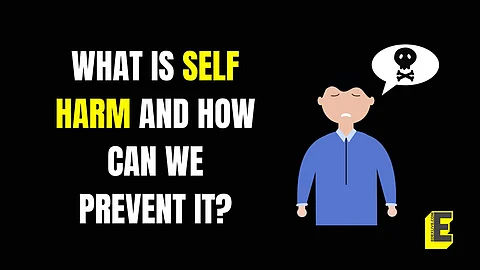

The Indian government has issued guidelines to schools on how to deal with students who have the tendency to inflict harm on themselves. The guidelines were issued by the Ministry of Education in response to the growing number of cases of self-harm among school students.
The guidelines cover a wide range of topics, including:
What is self-harm?
- The signs and symptoms of self-harm
- How to identify students who are at risk of self-harm
- How to talk to students about self-harm
- How to support students who are self-harming
- How to create a safe and supportive school environment for students who are self-harming
The guidelines encourage schools to create a safe and supportive environment for students, especially those students who are prone to self-harm. This means creating an environment where students feel comfortable talking about their self-harming tendencies and where they feel supported during their recovery.
The guidelines are a welcome step by the Indian government to address the issue of self-harm among school students. Self-harm is a serious problem that can have a devastating impact on a student's life. By providing schools with guidance on how to deal with self-harm, the government is helping to ensure that students who are self-harming get the support they need.
Why do people self-harm?
People self-harm for a variety of reasons. A few self-harm to express their emotions. Others self-harm as a way of punishing themselves. Still, others self-harm as a way of feeling control.
Self-harm is often a sign of an underlying mental health condition, such as depression, anxiety, or borderline personality disorder. If you are self-harming, it is important to seek professional help.
How to identify students who are at risk of self-harm
There are a number of signs and symptoms that can indicate that a student is at risk of self-harm, including:
- Talking about suicide or self-harm
- Withdrawing from social activities
- Expressing feelings of hopelessness or despair
- Giving away prized possessions
- Changes in mood or behaviour
- Physical signs of self-harm, such as cuts, burns, or bruises
If you notice any of these signs or symptoms in a student, it is important to talk to them about it. Let them know that you are concerned about them and that you want to help.
Schools can create a safe and supportive environment for students who are self-harm by:
- Educating staff and students about self-harm
- Developing a school policy on self-harm
- Providing training for staff on how to identify and support students who are prone to self-harm
- Creating a safe space for students to talk about their self-harm
- Working with parents and teachers to create a supportive environment
Self-harm is a serious problem, but it is one that can be overcome with the right support. By following the guidelines issued by the Indian government, schools can help to create a safe and supportive environment for students who are self-harming and encourage them to seek help.
